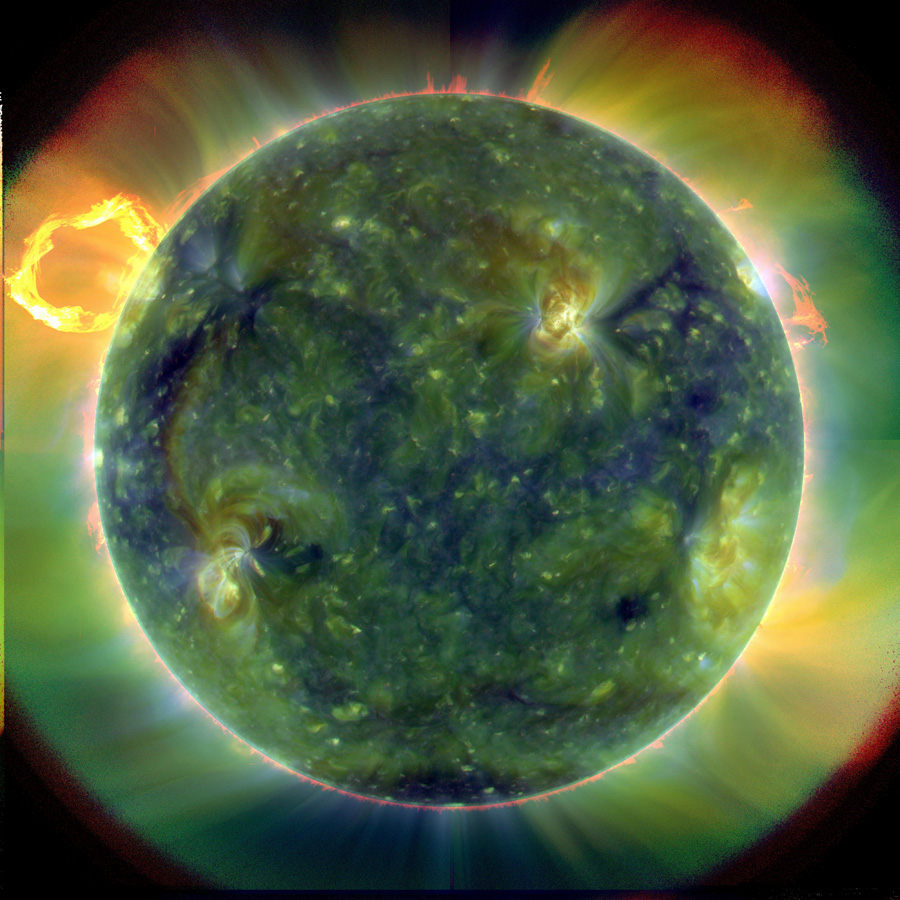Stunning NASA Video Shows 3 Years of the Sun in 3 Minutes

A mesmerizing new video showcases the sun's life over three years, stitched together from gorgeous snapshots taken by a NASA spacecraft in orbit around our nearest star.
The amazing new video of the sun is made up of photos captured by NASA's Solar Dynamics Observatory (SDO) — two images a day for three years. The eye-catching images offer an unprecedented glimpse of the daily commotion waxing and waning on the surface of the sun.
SDO's Atmospheric Imaging Assembly records an image of the sun every 12 seconds in 10 different wavelengths, according to NASA officials. The images seen in the video are in the extreme ultraviolet range.
"In this wavelength it is easy to see the sun's 25-day rotation as well as how solar activity has increased over three years," agency officials said in a statement.
In the video, the size of the sun appears to subtly fluctuate. These changes are caused by the variation over time in the distance between SDO and the sun. Despite these tiny variations, the shots are fairly stable and consistent.
With SDO maintaining this steady and unbroken gaze, heliophysicists regularly observe the sun's active regions, and have been able to watch solar storms as they occur. By closely monitoring changes in the sun's activity, researchers can catch solar flares and other major space weather events in the act.
"SDO's glimpses into the violent dance on the sun help scientists understand what causes these giant explosions — with the hopes of some day improving our ability to predict this space weather," NASA officials said.
Breaking space news, the latest updates on rocket launches, skywatching events and more!
NASA's Solar Dynamics Observatory was launched in February 2010 and is equipped with a suite of instruments to stare at the sun for 24 hours a day, seven days a week. This type of uninterrupted coverage allowed scientists to monitor the star as it ramps up toward a period of solar maximum this year in its regular 11-year cycle of activity.
Follow Denise Chow on Twitter @denisechow. Follow us @Spacedotcom, Facebook or Google+. Originally published on SPACE.com.

Denise Chow is a former Space.com staff writer who then worked as assistant managing editor at Live Science before moving to NBC News as a science reporter, where she focuses on general science and climate change. She spent two years with Space.com, writing about rocket launches and covering NASA's final three space shuttle missions, before joining the Live Science team in 2013. A Canadian transplant, Denise has a bachelor's degree from the University of Toronto, and a master's degree in journalism from New York University. At NBC News, Denise covers general science and climate change.
